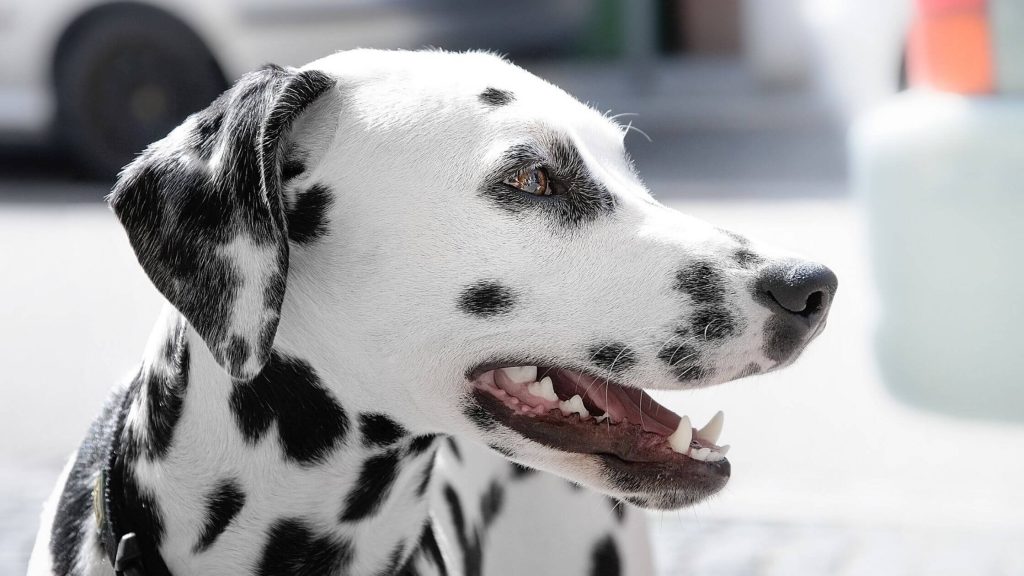We’re all familiar with the unique breed that is the Dalmatian dog, whether it’s thanks to a certain popular Disney film, or the countless fabric designs inspired by that distinctive polka-dot pattern. Based on its name, one would believe that the dog originates from the Dalmatian coast. And for Croatians, this would be an honour to have such a beloved dog breed associated with our country.
But actually, their supposed origins trace as far back to Ancient Egypt. King Cheops, who built the Great Pyramid, was said to have owned one in 3700 BC. Greek frescos from 2,000 years later were seen to depict black- and brown-spotted dogs. From both of these ancient sources, some canine historians point the origins of the Dalmatian to ancient breeding between a Cretan hound (originating from the Greek Island), and a White Antelope dog, resulting in a swift, white dog that hunted deer and ran with horses. In fact, the breed’s name is said to be a version of “Damachien”, a name that blends the Latin term for fallow deer (“dama”) and the French word for dog (“chien”). While some say it is an Egyptian breed, others associate it with being French, Scandinavian, or Italian. Confusing, right?
Adding to the mystery, the Dalmatian was first determined as a breed in England, as they were brought there from Europe with the purpose of being used as a carriage dog – thanks to their agile and athletic appearance, their natural strength, and their affinity for horses. They were also used as guard dogs, running alongside carriages to serve as protectors, and in the military to attack mounted units, in which they were respected for their battle efficiency.
These dogs were also a favourite companion of firefighters. Running alongside the horses that pulled their water pumps, they acted like living sirens, barking ahead of the firemen approaching the site, ensuring bystanders kept out of the way. In the United States, the use of Dalmatians in the fire department was especially popular. Even after the horses were soon replaced by shiny red engines, the dogs continued to have a place of honour in the firehouse.
And, in the spirit of the breed’s playful nature, Dalmatians were circus dogs. Their ability to perform tricks and amuse the audience is owed to their retentive memory, which paired with their natural charisma and distinctive appearance made them natural performers and a hit with the audience. Dalmatians are known for their seemingly endless energy, which may have them appear as goofy as the golden retriever, or similar family dog breeds. But on the contrary, they are quite smart which paired with their strong memory is super helpful when it comes to training.
But the appearance that made them most popular was 101 Dalmatians, the beloved Disney film which helped portray them as a loveable companion and a family dog, which led to a sudden rise of families getting the breed. Loyal and good with children, Dalmatians are highly energetic, playful, and sensitive dogs, to the point where their energy levels may be too high for very small children. As friendly as they may be, their high energy has Dalmatians needing plenty of exercise and activities, otherwise, they are prone to weight gain, anxiety, and even behaviour problems including irritability and aggressiveness (especially with other dogs) as they also tend to bark excessively. And unfortunately, the fad had a side effect of irresponsible breeding and inappropriate adoption, as many were unprepared to handle their high energy.
But back to its name and supposed origins. Dalmatians are believed to be named after the coastal area of Croatia. They are a popular symbol in Dalmatia; when visiting the region, one can buy souvenirs such as plush toy Dalmatians at any local gift shop. Aside from the theories of the breed being from Egypt, Greece, or France, it could also have come from Roman Illyrian Dalmatia (the northwestern part along the Adriatic Sea) from white hounds with black or brown markings.
In fact, the first written document about the Dalmatian dog comes from the archives of the Diocese of Đakovo in eastern Croatia, where the Bishop of Đakovo Petar Horvat described the state of the economy in 1374, in which he covered the different livestock including the dogs bred in the area. Among these, the Dalmatian dog is mentioned as “hunting dogs 4 to 5 palms tall (60 to 75 cm), with short white hairs and black round spots on various parts of the body. These freckles have a diameter of about 1 to 2 fingers. That is why it is called “Dalmatian dog” (Canis Dalmaticus).”
Whatever the true history may be, it’s no secret that the region of Dalmatia prides itself on the breed. Everyone likes dogs, so why not use that as a marketing opportunity? In fact, the city of Zadar (located in the very heart of Dalmatia) planned in 2018 to launch the first pedestrian crossing with dots instead of tracks. Led by entrepreneur and tourist guide Sandra Babac, the “Zebra Dalmatinka” came from the need to place a pedestrian crossing as a shortcut between the famous Zadar Sea Organ and Greeting to the Sun monuments, and as an opportunity to promote the connection between Dalmatia and the Dalmatian dog, which according to Babac is not used enough to market its supposed country of origin in the world. There have since not been any known updates to this story, but we can only imagine how iconic the attraction could be, and what a brilliant tribute it would make to the four-legged enigma.
For more, check out Made in Croatia.











